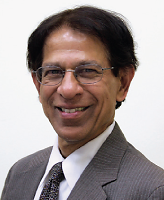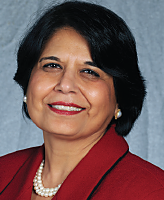We Must Do Better for the Children

The importance of child and adolescent psychiatry is enormous, even for adult psychiatry. A large majority of mental illnesses seen in adults have their origins in childhood and adolescence. Early diagnosis and treatment of these disorders will thus impact their prevalence and course in adult life.
Walter Barton’s history of APA includes an excellent account of the development and growth of child psychiatry in the United States. The pioneer builder and promoter of the model interdisciplinary team in a child guidance clinic was William Healy. The American Academy of Child and Adolescent Psychiatry (AACAP) was founded in 1953. Later, child psychiatry became the first subspecialty of psychiatry to be accredited by the American Board of Psychiatry and Neurology. One of the earliest collaborations between APA and AACAP was described by Krug and Lourie in “Career Training in Child Psychiatry: Report of the Conference on Training in Child Psychiatry.” The conference was held in Washington, D.C., from January 10 to 15, 1964.
Two recent monographs (“Institute of Medicine: Preventing Mental, Emotional, and Behavioral Disorders Among Young People: Progress and Possibilities,” 2009; and Jeste DV and Bell CC: “Prevention in Mental Health: Lifespan Perspective.” Psychiatric Clinics of North America, 2011) highlight prevention in psychiatry—in childhood and across the lifespan, respectively.
I invited Paramjit Joshi, M.D., president-elect of the American Academy of Child and Adolescent Psychiatry, to describe the current status of child and adolescent psychiatry in the United States and make recommendations for improvement. Below is her succinct summary.
Paramjit Joshi, M.D.

Today, a staggering number of families struggle with a spectrum of conditions that affect the minds and brains of children and, if untreated, limit their ability to live happy, healthy lives. As a pediatrician and a child and adolescent psychiatrist, and as someone who has dedicated her life to children, I strongly feel that we need to think differently and shift our dialogue about children’s mental health. In medical school we were taught to think backward, to diagnose things after they occur, to cure things after they happen. But what if we flipped the model? What if we could look forward, anticipate, and intervene before disease begins? Ultimately, it is not just about keeping our children healthy, but also about creating a society of healthy adults.
As pediatricians and child and adolescent psychiatrists, we are already trained to think forward. We think developmentally: what happens at two months, four months, eight months, two years; how can we prevent, screen, and anticipate? This type of thinking has the power to revolutionize medicine—not just for children, but for all people. We have the tools to anticipate the entire future of a person’s health in childhood and intervene. Nowhere is that approach more needed than in ensuring the mental health of our children.
I propose beginning with the following steps:
Accept that mental health is a children’s health issue. In the United States, 1 in 5 children suffers from a medical condition that affects mental health. These encompass a wide range of diagnoses, including depression, anxiety, eating disorders, and developmental disorders. Of the 15 million children affected by such conditions, only 20 percent ever receive treatment. This is especially sobering when we consider that by age 14, half of all lifetime diagnoses of mental illness will begin manifesting, and that 75 percent will show up by age 24. In the face of these numbers, children and families urgently need better ways to get the necessary support. | |||||
Start screening early. As with obesity and diabetes, pediatricians know that by detecting disease in childhood and intervening early, we can have a tremendous effect on the health of that person in adulthood. By contrast, there is an average delay of eight to 10 years between the onset of symptoms and treatment for children with mental health issues. This is driven in part by a lack of focus on early identification. For the 1 in 5 children with a mental health condition, such early recognition could be lifesaving. | |||||
Treat the child, not the diagnosis. A diagnosis is, at best, a start, not an end. This is especially true in mental health. Children with the same diagnosis can exhibit profoundly different behaviors and need very different approaches. To be effective, the treatment of mental health in children must be individualized for the child and his or her family, and it must include an understanding of environmental, social, and developmental factors. | |||||
Address genetics. As with several forms of cancer and metabolic disease, many mental health conditions have a significant genetic predisposition. Technological breakthroughs during the past few years—in molecular evaluation, genetic sequencing and variation, biomarkers, and advanced imaging—have helped us understand, identify, and intervene in many medical issues before they manifest symptoms. It is time to use these tools as much for mental health as we do for cancer and other diseases with a high genetic predisposition. | |||||
Ensure access to care. Even with the most advanced approaches, real change cannot be achieved if the significant shortages of pediatric mental health providers are not addressed. This is a profound failing in a health system that is supposed to ensure that children receive the best available care. | |||||
Now is the time for leadership. As we form task forces, forums, and expert panels to respond to the shootings in Newtown, Conn., a discussion must take place about how we can ensure the mental health and well-being of our children. If it does not, we will have failed both the children who perished on December 14 and those who are fortunate enough to still be in our care.
The nation has a social and moral imperative to support the 1 in 5 children who need access to care. But it also has a practical imperative. Physically and mentally healthy children are more likely to become physically and mentally healthy adults. These children will grow up and enter our armed forces, our intelligence communities, our workforces, and our governments. Strengthening early access to mental health care strengthens communities and promotes stability and enables a free society.
Continued support, funding, and implementation of the following are needed:
Appropriate funding for training child mental health specialists, including loan repayment (Affordable Care Act Section 5203 and Budget Act of 1997). | |||||
Grants to colleges and universities for the development, expansion, or enhancement of training programs in social work, graduate psychology, professional training in child and adolescent mental health, and pre-service or in-service training for paraprofessionals in child and adolescent mental health (Affordable Care Act Section 5206). | |||||
Mental health parity—more accountability by payers to cover mental health care at reasonable rates. | |||||
Funds for school-based mental health (HR 751 in 112th Congress). Call on the new Congress to have this effort continued and funded adequately. | |||||
Funding protection for NIMH and the Substance Abuse and Mental Health Services Administration. In light of expected budget cuts, it is important that cuts do not undo what little support there is for research into the causes, treatments, and cures of mental illnesses. ■ | |||||



